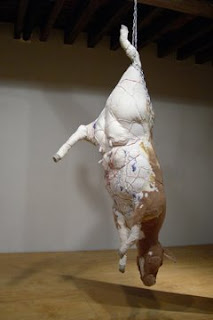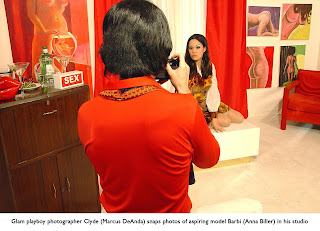 Over their recent albums (including the outstanding Strictly Leakage, free at rhymesayers.com) Minneapolis duo Atmosphere – producer Ant and MC Slug – have relentlessly re-made their brand of indie hip hop. On the two previous discs Ant has been the duo’s shape-shifter, his production working through contemporary rap staples into a funk-suffused golden era Heavy D-like style. His latest mutation features stripped melodic beats, with a small core of live instruments providing a backdrop for Slug.
Over their recent albums (including the outstanding Strictly Leakage, free at rhymesayers.com) Minneapolis duo Atmosphere – producer Ant and MC Slug – have relentlessly re-made their brand of indie hip hop. On the two previous discs Ant has been the duo’s shape-shifter, his production working through contemporary rap staples into a funk-suffused golden era Heavy D-like style. His latest mutation features stripped melodic beats, with a small core of live instruments providing a backdrop for Slug.The MC is more obviously the focus on When Life Gives You Lemons’ minimalist soundscapes (some tracks feature only one or two instruments), and Slug steps up accordingly. His voice is more musical, his cadence more varied, and his narratives continually subvert the conventions he’s set up over the years. “The Skinny,” for instance, stories a woman’s addiction to cigarettes as if she were an abused sex worker. Indeed, this album marks a shift towards adulthood, where alternating self-deprecation and boasting gave previous efforts the tinge of prolonged late-adolescence that’s all-too commonplace in rap today. So for example, “Yesterday” sounds like a ballad for an alienated friend (think 2Pac’s “I Ain’t Mad Atcha”), but turns out to be about the rapper’s recently-deceased father.
Parenthood is undoubtedly among the album’s main themes. Even more promising, though, is Slug’s feminism, which has been implicit in Atmosphere albums for a while, but now takes center stage. After all, the opener features the line “we made her drown in a lake full of patriarchy,” and roughly half the 15 tracks on When Life Gives You Lemons are about women or feature female protagonists. If this album’s not as immediately gratifying as Atmosphere’s previous work, it’s certainly more rewarding. And, after all, what musical genre needs a talented feminist voice more than hip hop?
A similar version of this review appears in the May 14 issue of The L Magazine, and can be read here.





















